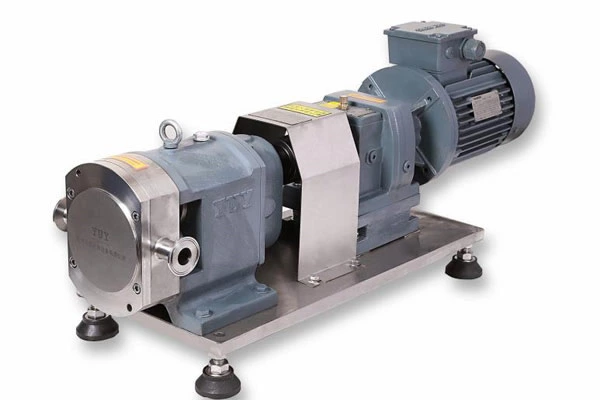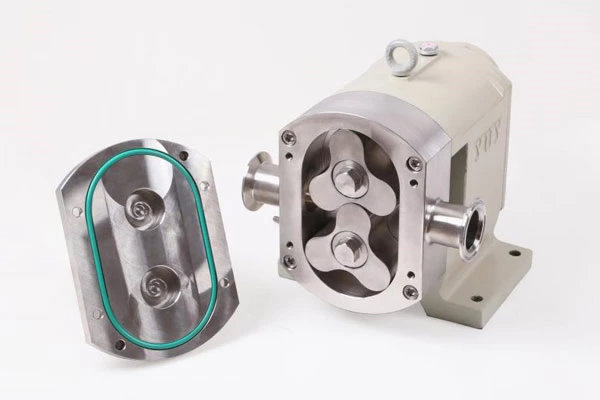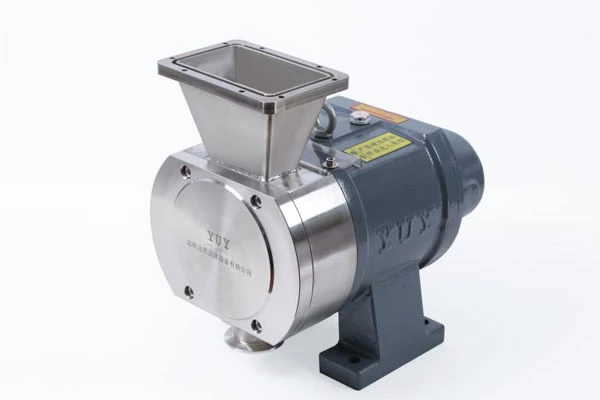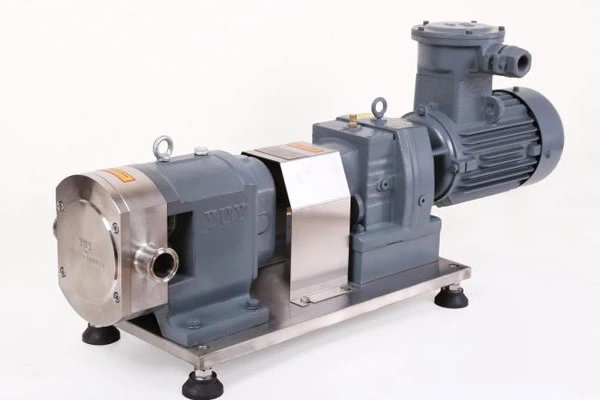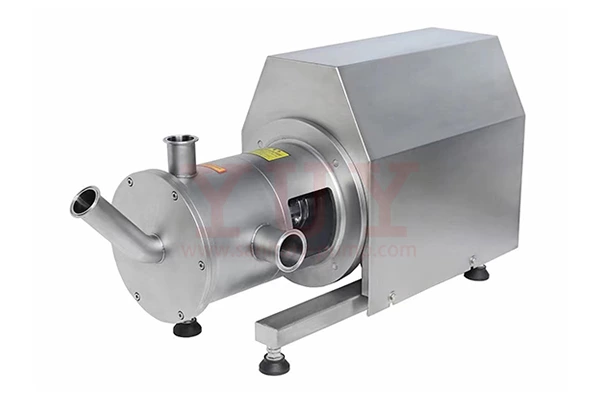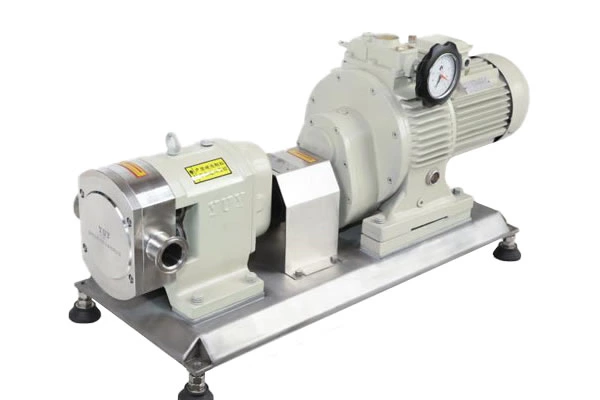Characteristics And Advantages Of The Structure Of The Sanitary Rotary Cam Pump
Sanitary Rotary Lobe Pump will arrange and assemble magnets (n is even) in a regular manner on the inner and outer magnetic rotors of the magnetic actuator, so that the magnet parts form a complete coupled magnetic system with each other. When the inner and outer magnetic poles are opposite in polarity, i.e. the displacement angle between the two poles is Φ=0, the magnetic energy of the magnetic system is at its lowest; When the magnetic poles rotate to opposite poles, i.e. the displacement angle between the two poles is Φ=2 π/n, the magnetic energy of the magnetic system is at its maximum. After removing the external force, due to the mutual repulsion of the magnetic poles in the magnetic system, the magnetic force will restore the magnet to its lowest magnetic energy state. So the magnet generates motion, driving the magnetic rotor to rotate.
Structural characteristics
1. Permanent magnet pump valve
Permanent magnets made of rare earth permanent magnet materials have a wide working temperature range (-45-400 ℃), high coercivity, and good anisotropy in magnetic field direction. They do not experience demagnetization even when they are close to the same polarity, making them an excellent magnetic field source.
2. Isolation sleeve pump valve
When using a metal isolation sleeve, the isolation sleeve is in a sinusoidal alternating magnetic field, inducing eddy currents on a cross-section perpendicular to the magnetic field lines and converting them into heat. The expression for eddy current is: where Pe eddy current; K - constant; N-rated speed of the pump; T-magnetic transmission torque; F - Pressure inside the spacer; D - Inner diameter of spacer sleeve; The resistivity of a material; The tensile strength of the material. After the pump is designed, n and T are given operating conditions, and reducing vortex can only be considered from aspects such as F and D. The use of non-metallic materials with high resistivity and strength to make isolation sleeves has a significant effect in reducing eddy currents.
3. Control of cooling lubricant flow rate
When the pump is running, a small amount of liquid must be used to flush and cool the annular gap area between the inner magnetic rotor and the isolation sleeve, as well as the friction pair of the sliding bearing. The flow rate of the coolant is usually 2% -3% of the pump design flow rate, and the annular gap area between the inner magnetic rotor and the isolation sleeve generates high heat due to eddy currents. When the cooling lubricant is insufficient or the flushing hole is not smooth or blocked, it will cause the medium temperature to be higher than the working temperature of the permanent magnet, gradually causing the inner magnetic rotor to lose magnetism and the magnetic transmission to fail. When the medium is water or water-based liquid, the temperature rise in the annular gap area can be maintained at 3-5 ℃; When the medium is hydrocarbons or oil, the temperature rise in the annular region can be maintained at 5-8 ℃.
4. Sliding bearings
The materials for sliding bearings of sanitary rotary cam pumps include impregnated graphite, filled polytetrafluoroethylene, engineering ceramics, etc. Due to the excellent heat resistance, corrosion resistance, and friction resistance of engineering ceramics, the sliding bearings of sanitary rotary cam pumps are often made of engineering ceramics. Due to the brittleness and low expansion coefficient of engineering ceramics, the bearing clearance must not be too small to avoid shaft hugging accidents.
Due to the fact that the sliding bearings of the sanitary rotary cam pump are lubricated with the medium being conveyed, different materials should be selected to make the bearings according to different media and operating conditions.
5. Protective measures
When the driven components of the magnetic transmission operate under overload or the rotor gets stuck, the main and driven components of the magnetic transmission will automatically slip to protect the pump. At this time, the permanent magnet on the magnetic actuator will generate eddy and magnetic losses under the action of the active rotor alternating magnetic field, causing the temperature of the permanent magnet to rise and the magnetic actuator to slip and fail.
Advantages of sanitary rotary cam pump
Compared with centrifugal pumps using mechanical seals or packing seals, sanitary rotary cam pumps have the following advantages:
1. The pump shaft has changed from a dynamic seal to a closed static seal, completely avoiding medium leakage.
2. No need for independent lubrication and cooling water, reducing energy consumption.
3. From coupling transmission to synchronous drag, there is no contact or friction. Low power consumption, high efficiency, and damping effect reduce the impact of motor vibration on the pump and the effect of pump cavitation vibration on the motor.
When overloaded, the inner and outer magnetic rotors will slip relative to each other, providing protection for the motor and pump.
